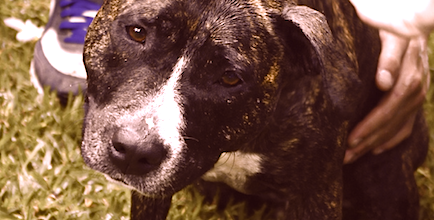Benign Prostatic Hyperplasia (BPH) in Dogs
Symptoms of benign prostatic hyperplasia in a dog are more likely to be related to straining when passing feces rather than having difficulty urinating.

Benign prostatic hyperplasia (BPH) is an age-related condition that occurs in entire (not castrated) male dogs usually over the age of 5.
While the name “benign prostatic hyperplasia” sounds intimidating, all it really means is “non-cancerous enlargement of the prostate gland.” Not so bad after all, eh?
The prostate gland enlarges as a consequence of continual stimulation by the male hormone testosterone; hence BPH is common in male dogs who are not neutered but rare in castrated animals. Unlike human men, dogs with prostate problems do not usually have difficulty urinating. Canine signs are more likely to be related to straining when passing feces and possibly dripping blood from the penis.
Happily, treatment is highly effective, and the enlargement is reversible once hormone stimulation is removed.

Don’t leave your pet’s safety to chance
Sign up for Petful recall alerts today.

Symptoms
The prostate gland is often considerably enlarged before the dog shows any signs at all of a problem.
This is because the prostate expands without interfering with any other anatomy — that is, until it reaches a critical size where it presses against the rectum (a bit like putting your foot on a hosepipe), making it difficult to pass feces. You may notice this if the dog is taking forever to move his bowels when he goes to the toilet or is straining to do so.
Other common signs include spotting blood from the penile tip or blood in the first few drops of urine. This happens because the enlarged prostate is inflamed and seeps blood, which drips into the urethra and out in the first pass of urine.
Causes
The prostate gland has receptors that are sensitive to testosterone. Prolonged stimulation of these receptors in effect “feeds” the prostate, telling it to enlarge (the word “hyperplasia” means “enlargement”).

Diagnosis
Dogs under a certain size have prostate glands that can be felt during a gentle per rectum exam. Thus your veterinarian may perform a gentle internal examination by inserting a gloved finger into the dog’s rectum, allowing him to feel the size and shape of the prostate.
In large dogs the prostate is located further forward and may be physically out of reach, in which case imaging, such as an ultrasound scan or X-rays, is required.
It is sometimes necessary to rule out other causes of enlargement such as infection or cancer. To do this, a fine needle aspirate (a needle is guided into the prostate and suction is applied to gain a small sample of cells) or a prostatic wash is performed.
The latter involves passing a urinary catheter to the level of the prostatic gland, flushing the area with a small amount of sterile saline, massaging the prostate and then sucking the fluid back out. Either of these techniques should yield a sufficient sample of cells to move the diagnosis forward.
Treatment
Several highly successful treatments are available. The traditional and highly effective solution is surgical castration, which removes the main source of testosterone and allows the prostate to settle back down.
Alternatives include hormone therapy to cancel out the amount of testosterone produced by the testicles or drugs that block the uptake of testosterone by the prostate gland. Whatever the method of treatment, once the overstimulation ceases, the prostate gradually returns to a normal size and the symptoms resolve.
Prevention
Surgical castration is entirely preventative because it stops the overstimulation of the prostate by testosterone.
References
- “How do I treat benign prostatic hypertrophy?” Kustritz. Clinical Canine and Feline Reproduction. Publisher: Wiley Blackwell. 173–175.
- “Effects of finasteride on the size of the prostate gland in dogs with benign prostatic hypertrophy.” Sirinarumitr. JAVMA: 1275–1280.
This pet health content was written by a veterinarian, Dr. Pippa Elliott, BVMS, MRCVS. It was last reviewed Oct. 13, 2018.







